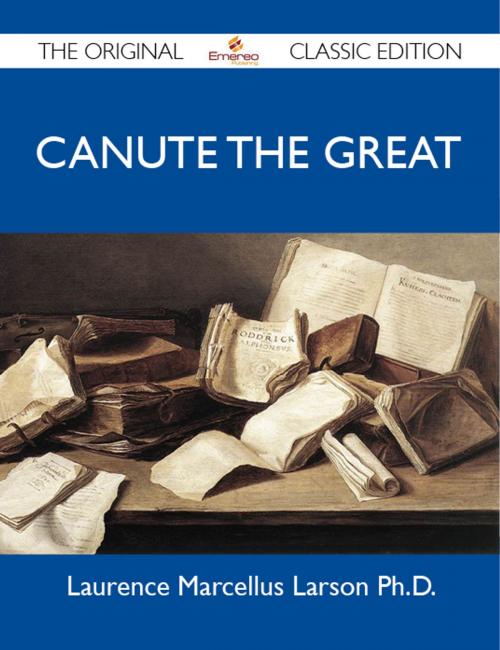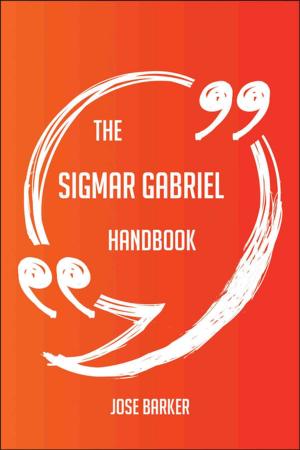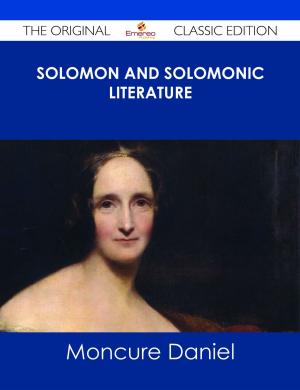Canute The Great - The Original Classic Edition
Nonfiction, Reference & Language, Reference, Fiction & Literature| Author: | Ph.D Laurence | ISBN: | 9781486420858 |
| Publisher: | Emereo Publishing | Publication: | October 24, 2012 |
| Imprint: | Emereo Publishing | Language: | English |
| Author: | Ph.D Laurence |
| ISBN: | 9781486420858 |
| Publisher: | Emereo Publishing |
| Publication: | October 24, 2012 |
| Imprint: | Emereo Publishing |
| Language: | English |
This is a new and freshly published edition of this culturally important work by Laurence Marcellus Larson Ph.D., which is now, at last, again available to you.
Enjoy this classic work today. These selected paragraphs distill the contents and give you a quick look inside Canute The Great:
These investigators both came to the same general conclusion: that Old Norse culture, especially on the literary side, shows permeating traces of Celtic and Anglo-Saxon elements; that the Eddic literature was not an entirely native product, but was largely built up in the viking colonies in Britain from borrowed materials.
...However, the sources on which these are in a measure based, the fragments of contemporary verse that are[Pg x] extant and much that has not survived, have been woven into a history, the equal of which for artistic treatment, critical standards, and true historical spirit will be difficult to find in any other mediæval literature.
...There were Danish outposts on the Slavic shores of modern Prussia; the larger part of Norway came for some years to be a vassal state under the great earl, Hakon the Bad; the Wick, which comprised the shores of the great inlet that is now known as the Christiania Firth, was regarded as a component part of the Danish monarchy, though in fact the obedience rendered anywhere in Norway was very slight.
...Harold Fairhair, the founder of the Norse monarchy, left the sovereignty to his son Eric (later named Bloodax); but the jealousies of Erics many brothers combined with his own cruel régime soon called forth a reaction in favour of a younger brother, Hakon the Good, whose youth had been spent under Christian influences at the English court.
...It has been thought that the revolts represented a heathen reaction against the new faith, or a nationalistic protest against German influences; these factors may have entered in, but it is more likely that a general dissatisfaction with Harolds rule caused by the ill success of his operations against Germans, Swedes, and Norwegians was at the bottom of the [Pg 14]hostilities.
This is a new and freshly published edition of this culturally important work by Laurence Marcellus Larson Ph.D., which is now, at last, again available to you.
Enjoy this classic work today. These selected paragraphs distill the contents and give you a quick look inside Canute The Great:
These investigators both came to the same general conclusion: that Old Norse culture, especially on the literary side, shows permeating traces of Celtic and Anglo-Saxon elements; that the Eddic literature was not an entirely native product, but was largely built up in the viking colonies in Britain from borrowed materials.
...However, the sources on which these are in a measure based, the fragments of contemporary verse that are[Pg x] extant and much that has not survived, have been woven into a history, the equal of which for artistic treatment, critical standards, and true historical spirit will be difficult to find in any other mediæval literature.
...There were Danish outposts on the Slavic shores of modern Prussia; the larger part of Norway came for some years to be a vassal state under the great earl, Hakon the Bad; the Wick, which comprised the shores of the great inlet that is now known as the Christiania Firth, was regarded as a component part of the Danish monarchy, though in fact the obedience rendered anywhere in Norway was very slight.
...Harold Fairhair, the founder of the Norse monarchy, left the sovereignty to his son Eric (later named Bloodax); but the jealousies of Erics many brothers combined with his own cruel régime soon called forth a reaction in favour of a younger brother, Hakon the Good, whose youth had been spent under Christian influences at the English court.
...It has been thought that the revolts represented a heathen reaction against the new faith, or a nationalistic protest against German influences; these factors may have entered in, but it is more likely that a general dissatisfaction with Harolds rule caused by the ill success of his operations against Germans, Swedes, and Norwegians was at the bottom of the [Pg 14]hostilities.















